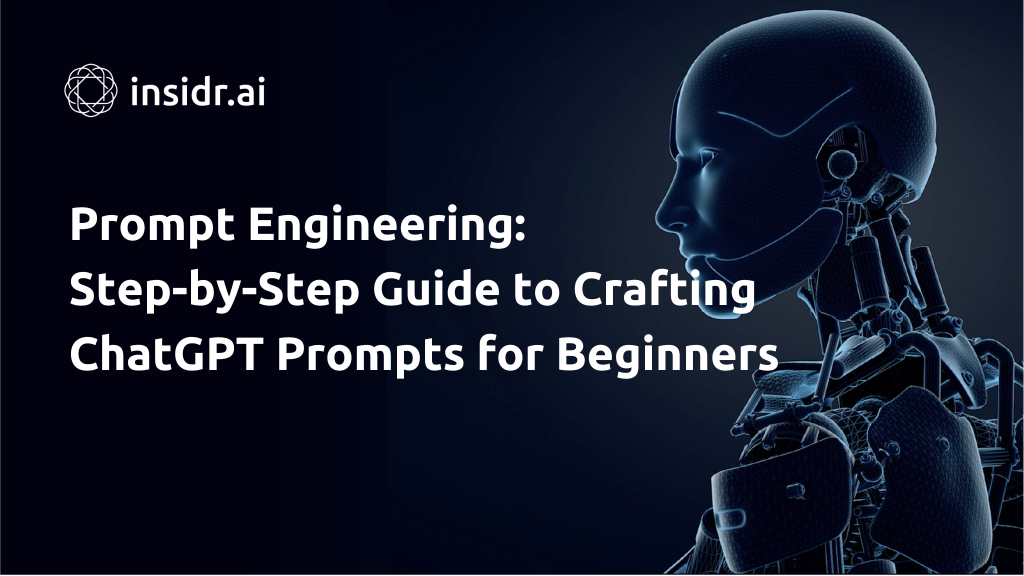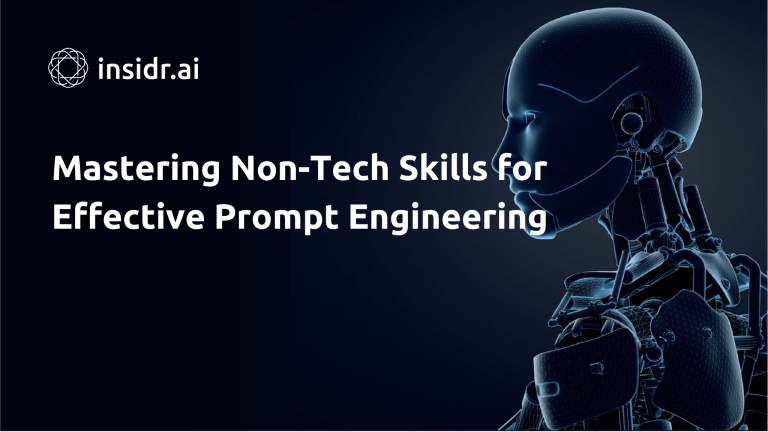
In the world of artificial intelligence and natural language processing, the advent of models like ChatGPT has revolutionized the way we interact with machines.
These models can generate human-like text and have numerous applications, from answering queries to generating creative content.
However, the effectiveness of these models largely depends on the quality of the prompts they receive.
Crafting effective prompts, therefore, becomes a critical skill for getting the best out of these AI systems.
Introduction to Prompt Engineering
Prompt engineering involves the art of constructing prompts that elicit the desired responses from AI models like ChatGPT.
It’s not just about asking a question; it’s about providing the right context natural language, tone, and structure to guide the AI in the same way as generating the content you need.

What is Prompt Engineering?
At its core, prompt engineering involves instructing an AI, such as GPT-4, to perform a specific task by providing it with carefully constructed instructions or prompts.
These prompts can range from simple phrases to detailed paragraphs, and they guide the AI in generating relevant outputs.
While you might be familiar with using prompts in tools like ChatGPT, the true power of prompt engineering goes beyond basic interactions and can lead to valuable insights and outputs.
The quality of your prompts directly influences the quality of AI-generated outputs. This concept is often summarized as “garbage in, garbage out.”
In essence, the better you engineer your prompts, the more valuable insights and solutions you can extract from AI models.
Importance of Prompt Engineering
To illustrate the importance of prompt engineering, consider a simple mathematical equation. In an example provided, a basic math equation is submitted to an AI model, resulting in an incorrect answer.
However, with a minor adjustment to word order in the prompt, the correct answer is obtained. This showcases how slight changes in prompts and input data can lead to significant variations in outputs, even in straightforward tasks.
This phenomenon becomes even more complex problem pronounced in complex tasks. Crafting effective prompts is crucial for extracting accurate and valuable information from AI models, especially when dealing with intricate subjects or nuanced questions.
Understanding the Role of Prompts
Prompts serve as instructions for AI models and AI tools. They provide the initial context and guidelines for generating the output.
A well-crafted, effective prompt that can make the difference between a relevant, coherent response and a random jumble of words.
Components of a Well-Structured Prompt
A good prompt consists of multiple elements:
- Context: Clearly define the context of the task you want the AI to perform.
- Instruction: Specify the format or type of response you’re seeking.
- Examples: Provide examples to illustrate your expectations.
- Constraints: If necessary, set constraints to ensure the response meets certain criteria.
👉 Read more: Best AI Chatbots
1. Choosing the Right Context
The context you provide when developing prompts is crucial for the AI to understand the scope of the task.
For instance, if a prompt engineer want ChatGPT to write a creative story, your prompt should set the scene, introduce characters, and convey the desired mood.
2. Adding Specificity to your Prompts
Vague prompts can lead to ambiguous responses. When using generative AI; be specific about what you want.
Instead of asking, for example, “Tell me about cars,” ask, “Write a paragraph describing the evolution of electric cars.”
3. Utilizing Personal Pronouns for Engagement
Using personal pronouns like “you” and “we” in your prompts can create a sense of interaction and engagement.
For instance, a prompt, “How would you explain the concept of time travel?” involves the AI in the task.
4. The Power of Rhetorical Questions
Rhetorical questions can stimulate deeper thinking and result in more elaborate responses.
For instance, “Isn’t it fascinating how language evolves over time?”. This is a great way to use generative ai for a prompt engineer.
Natural language prompts: analogies and metaphors
Step-by-Step Guide to Crafting Effective Prompts
- Define Your Objective: Clearly understand what you want from the AI.
- Break Down the Task: Divide complex tasks into smaller, manageable prompts.
- Provide Context: Set the scene and offer any necessary background information.
- Specify the Format: State if you want a short answer, a detailed explanation, or a creative piece.
- Include Examples: Show the AI what you’re looking for through examples.
- Use Engaging Language: Write in a conversational and interactive style.
- Incorporate Constraints: If needed, outline any limitations on the response.
- Review and Refine: Before generating the final output, review and adjust the prompt.
AI Tools for Prompt Engineering
To explore prompt engineering, we’ll be using the OpenAI Playground. It’s important to note that this is distinct from tools like ChatGPT, as it provides direct access to base AI models.
These models are the foundation for generative AI and more specialized applications programming languages like ChatGPT, making them essential for developers creating scalable AI-based businesses.
Types of Prompting Methods
Prompt engineering involves various methods to shape AI responses. Here are some key techniques:
- Role Prompting: In role prompting, you assign a specific role to the AI before asking questions. For instance, you could instruct the AI to think like a doctor or a lawyer before posing medical or legal questions. This technique helps align AI responses with predefined contexts, leading to more accurate answers.
- Zero Shot Prompting: Zero shot prompting involves asking questions without explicitly providing examples. The AI generates responses based on its learned patterns. It’s like using the AI as an autocomplete engine, where the prompt alone guides the output.
- One Shot and Few Shot Prompting: These methods involve providing one or a few examples of desired outputs, helping the AI understand the desired style, structure, and content. One-shot prompting provides a single example, while few-shot prompting offers multiple examples for better accuracy.
- Chain of Thought Prompting: This technique encourages the AI to explain its reasoning step by step, leading to more accurate results. It’s particularly useful for tasks involving arithmetic, common sense, and symbolic reasoning.
Opportunities for prompt engineers
As of 2023, prompt engineering presents lucrative opportunities for those willing to learn and apply the skill. Here are three main avenues to explore:
- Offering Prompt Engineering Services: Businesses are actively seeking individuals who can craft effective prompts to extract valuable insights from AI models. With just a few months of dedicated learning, you can position yourself as an expert and provide prompt engineering services to clients.
- Teaching Prompt Engineering: As companies seek to leverage AI tools for improved productivity, there’s a growing demand for AI education. By creating workshops or courses on prompt engineering, you can help businesses enhance their AI utilization and even build a sustainable teaching business.
- Building Businesses with Prompt Engineering: Crafting a well-written prompt can yield substantial value. Examples include creating AI-powered tools like content generators, recommendation systems, or specialized assistants. By turning your prompts into practical solutions, you can create and monetize unique business ideas.
The Future of Prompt Engineering
Prompt engineering is a skill with a limited time window for maximum impact. As AI models continue to advance, there’s a possibility that AI could evolve to write its own prompts and responses.
Therefore, the next one to two years could be a prime time for developers and prompt engineer to seize opportunities and create value in various domains.

Mastering Non-Tech Skills for Effective Prompt Engineering
The world of prompt engineering holds a wealth of insights and possibilities for those engaging with generative AI.
Beyond the technical aspects, there’s a range of non-tech skills that play a pivotal role in shaping the capabilities and outcomes of AI models.
These skills also empower individuals to enhance their interactions with AI systems, fostering better conversations and yielding more valuable insights.
In this article, we’ll explore five non-tech skills that contribute to prompt engineering and its impact on AI technology.
1. Effective Communication
Just like project managers or educators, prompt engineers need to excel in conveying instructions. People often grasp instructions better through examples, and AI models are no exception.
Edward Tian, the creator of GPTZero, a tool for detecting AI-written high school essays, utilizes examples to teach large language models distinct voices.
While Tian’s expertise is technical, this approach is open to anyone shaping prompts for AI, whether they’re seasoned professionals or students.
2. Subject Matter Expertise
Many prompt engineers specialize in fine-tuning AI models for specific contexts, such as healthcare research or legal applications.
Job postings for prompt engineering roles increasingly seek industry-specific knowledge.
Mishcon de Reya LLP, a British Law Firm, once advertised a GPT Legal Prompt Engineer role, requiring deep insights and technical background into legal practice.
This subject matter expertise enhances prompt crafting by ensuring accurate and relevant outputs.
3. Linguistic Skill
AI’s success hinges on intent, which is driven by language. Individuals skilled in using verbs, vocabulary, and tenses to convey goals are well-equipped to enhance AI performance.
Anna Bernstein, working with Copy.ai, likens prompts to magical spells, where a single word can drastically alter outcomes.
AI prompting involves prose, inviting individuals to unleash their linguistic prowess when crafting prompts.
4. Critical Thinking
While AI excels in synthesizing information, it can sometimes produce false outputs, a phenomenon known as hallucination.
Prompt engineers delve into this weakness, identifying errors and training the AI to rectify itself. For instance, Riley Goodside of Scale AI questioned a chatbot’s incorrect response and guided it through logical deductions.
This highlights the importance of subject matter familiarity and accurate fact-checking in producing reliable AI-generated content.
5. Creative Problem-Solving
Prompt engineering requires a creative spirit akin to that of a hacker. Anthropic, for instance, seeks prompt engineers with a “creative hacker spirit.”
While precision in language is vital, experimentation is equally crucial. As models grow in complexity, so does the potential for unexpected yet remarkable results.
Exploring diverse prompts and refining instructions based on outcomes enhances the chances of producing unique and valuable AI-generated content by a prompt engineer.
Large language models llms

Large language models represent a category of artificial intelligence (AI) frameworks that have undergone extensive training on massive datasets of text in order to simulate human-like language.
These frameworks are purposefully designed to comprehend and generate text using patterns akin to human language usage, enabling them to execute a wide array of tasks within natural language processing.
These tasks encompass generating text, providing responses to queries, translating languages, summarizing content, and more.
The architecture of these models is commonly constructed using neural networks, with a particular emphasis on transformers.
Transformers have demonstrated remarkable efficacy in capturing intricate language structures and associations. A notable hallmark of large language models is their capacity to produce logical and contextually appropriate text based on a given input or prompt.
Prompt engineer and generative AI
In the realm of “large language models,” the term “large” denotes the extensive scope of the training data and the parameters that define the model’s behavior.
These models undergo training with colossal datasets that encompass a diverse spectrum of topics and writing styles sourced from the internet and other text origins.
Furthermore, they encompass a substantial number of parameters, which serve as the variables enabling the model to formulate predictions. This capacity empowers them to encapsulate intricate language nuances and intricacies.
A prominent illustration of a well-recognized large language model is OpenAI’s GPT (Generative Pre-trained Transformer) series, which includes models like GPT-3.
These models incorporate billions of parameters and possess the capability to generate text that frequently exhibits an uncanny resemblance to human expression.
This versatility renders them highly adaptable for diverse applications across various domains.
Embracing the Future of Prompt Engineering
Non-tech skills are the driving force behind prompt engineering, shaping AI’s capabilities and yielding innovative solutions.
By cultivating effective communication, subject matter expertise, linguistic finesse, critical thinking, and creative problem-solving, individuals can harness the full potential of AI models.
A prompt engineer can use generative ai as an historical research assistant, for neural network, and protect against prompt injection attacks. All this can be high interest and be done as remote work using AI prompt words during the process and solve problems to the point.
As prompt engineering continues to evolve, these skills will remain essential in facilitating meaningful interactions, extracting valuable insights, and realizing AI’s true potential.
Conclusion
Prompt engineering is both an art and a serious computer science one. By following these guidelines, beginners can harness the power of AI tools and AI models like ChatGPT, stable diffusion and dall e, to produce content that meets their needs effectively.
Remember, a well-crafted prompt programming language is the key to unlocking the full potential of AI-powered language generation.
A machine learning engineer and developers with coding experience are not the only one who can use generative ai models and AI prompt with specific requirements and words to get a solution like a blog post and other desired output.
You can learn to use a generative AI model like ChatGPT and machine learning to get relevant responses and solve problems.
Prompt engineering techniques is a skill that has the potential to transform the way we interact with AI models, extract insights, and create valuable solutions.
By understanding the methods and techniques of prompt engineering, beginners can step into the AI landscape and harness its power for various opportunities.
Whether you’re considering offering services, teaching others, or building AI-powered tools, prompt engineering is your gateway to a world of innovation and business possibilities in the AI domain.
Start your journey today and unlock the potential of AI through the knowledge and skills of the art of prompt engineering.
FAQs
What if the AI's response is not what I expected
Review your prompt’s clarity and get more context. Adjust as needed and try to write it again.
What does a prompt engineer do?
A prompt engineer specializes in crafting and refining instructions for AI models, particularly large language models like GPT-3. Their role involves creating precise prompts to guide AI behavior and outputs for specific tasks.
Responsibilities encompass designing effective prompts, ensuring contextual understanding, and fine-tuning responses based on feedback. They adapt strategies for various tasks, creatively problem-solve, optimize outputs, and address model limitations.
Collaborating with experts, monitoring performance, and staying updated with AI advancements are integral. The prompt engineer’s expertise significantly influences AI behavior and output quality, enhancing accuracy and relevance across applications.
Can I use multiple prompts to get better results?
What is the salary of a prompt engineer?
The salary of a prompt engineer can vary significantly due to factors like location, experience, company size, and industry demand. As of my last update in September 2021, in the United States, a prompt engineer’s annual salary might span between approximately $70,000 and $150,000 or higher. However, the tech landscape is evolving, and the demand for skilled professionals such as prompt engineers could influence salary ranges.
For the most accurate and current salary information for prompt engineers, it’s advisable to explore job listings, industry insights, and seek input from experts within the AI and tech sectors.
How do I make my prompts engaging?
Use personal pronouns, ask intriguing questions, show your knowledge of ai technology and provide relatable examples.
Are there tasks AI prompts aren't suitable for?
How can I improve my prompt engineering skills?
Practice regularly, analyze AI responses, and learn from the outcomes.
Discover More AI Tools
Every week, we introduce new AI tools and discuss news about artificial intelligence.
To discover new AI tools and stay up to date with newest tools available, click the button.
To subscribe to the newsletter and receive updates on AI, as well as a full list of 300+ AI tools, click here.











